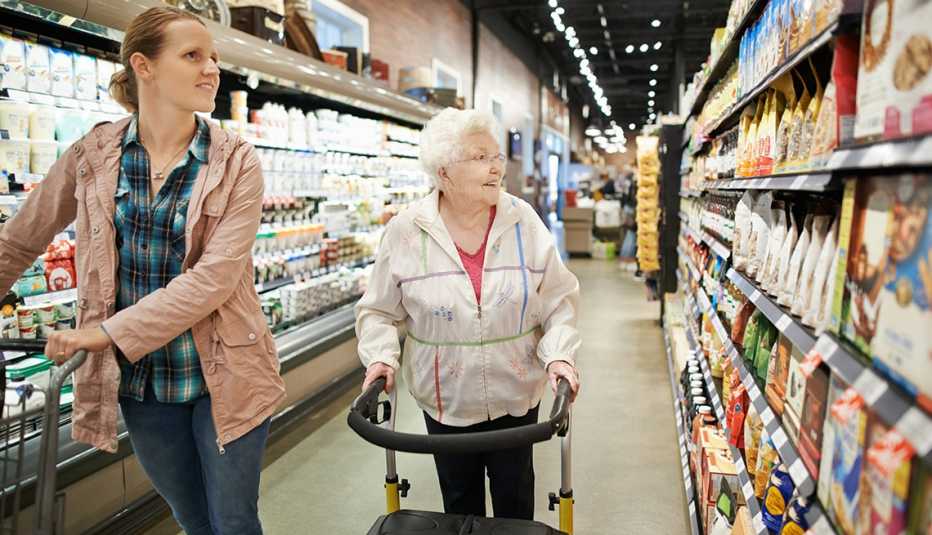Staying Fit


America's unpaid family caregivers are not getting what they need from brick-and-mortar stores, according to a new national study by AARP and NORC at the University of Chicago. While 93 percent of surveyed caregivers regularly shop for groceries and household basics for their loved ones, a lack of up-close parking, limited seating and narrow aisles in retail stores cause most to shop online for the convenience, despite preferring an in-store experience.
"We knew from our Cost of Family Caregiving work that caregivers are spending a lot of time and money in retail stores. But no one's really looked at the retail setting before and what it is that would make it easier for family caregivers,” says Bob Stephen, AARP vice president of caregiving and health. “There's this assumption that everyone just wants to shop on Amazon because it's easier. And yet we were seeing that wasn't the case."


AARP Membership— $12 for your first year when you sign up for Automatic Renewal
Get instant access to members-only products and hundreds of discounts, a free second membership, and a subscription to AARP the Magazine.
Get resources and tips to help take the stress out of caregiving with AARP’s Care Guides
There are 40 million unpaid caregivers in the U.S. and most of those surveyed said they spend their own money for items for their loved one or friend. More than half of the those surveyed who do more than 10 hours of caregiving a month spend $50 a month on the person they care for; 35 percent spend between $250-$500 a month on items such as groceries, gas and prescription drugs.
AARP's family and caregiving expert, Amy Goyer, cared for both of her parents for more than 10 years, as her father battled Alzheimer's disease and her mother lived with chronic pain. Planned outings to grocery shop or to dine out was part of their weekly routine. “It was cognitive stimulation, socialization, physical activity and fun,” she says, noting that she often picked a location for their excursions based on available accommodations. “Bathrooms were often a big issue for us,” she says. “There are very few ‘all gender’ or ‘family’ available in stores, and both of my parents required help in the restroom. The mall had one ‘family’ restroom and that was one of the reasons we chose to go to that mall — it made things much easier for us."


There are several ways retail stores can make shopping more conducive to family caregivers and their loved ones, according to the survey. Solutions proffered include parking spots designated for caregivers, adding available seating throughout the stores so older Americans can rest when needed and creating wider aisles to accommodate wheelchairs and a shopping cart.
"[The retailer] who can do that is going to really win,” says Stephen. “These are folks who are spending their own money for the person they're caring for, and chances are if they are there they're buying for themselves and maybe they've got young children to buy for too — so it's an opportunity."

































































More on caregiving
AARP Answers: Nursing Homes and the Coronavirus
The latest on evolving rules, visiting loved ones, your rights and more10 COVID-19 Questions to Ask a Nursing Home
Guidance for caregivers during the COVID-19 pandemic